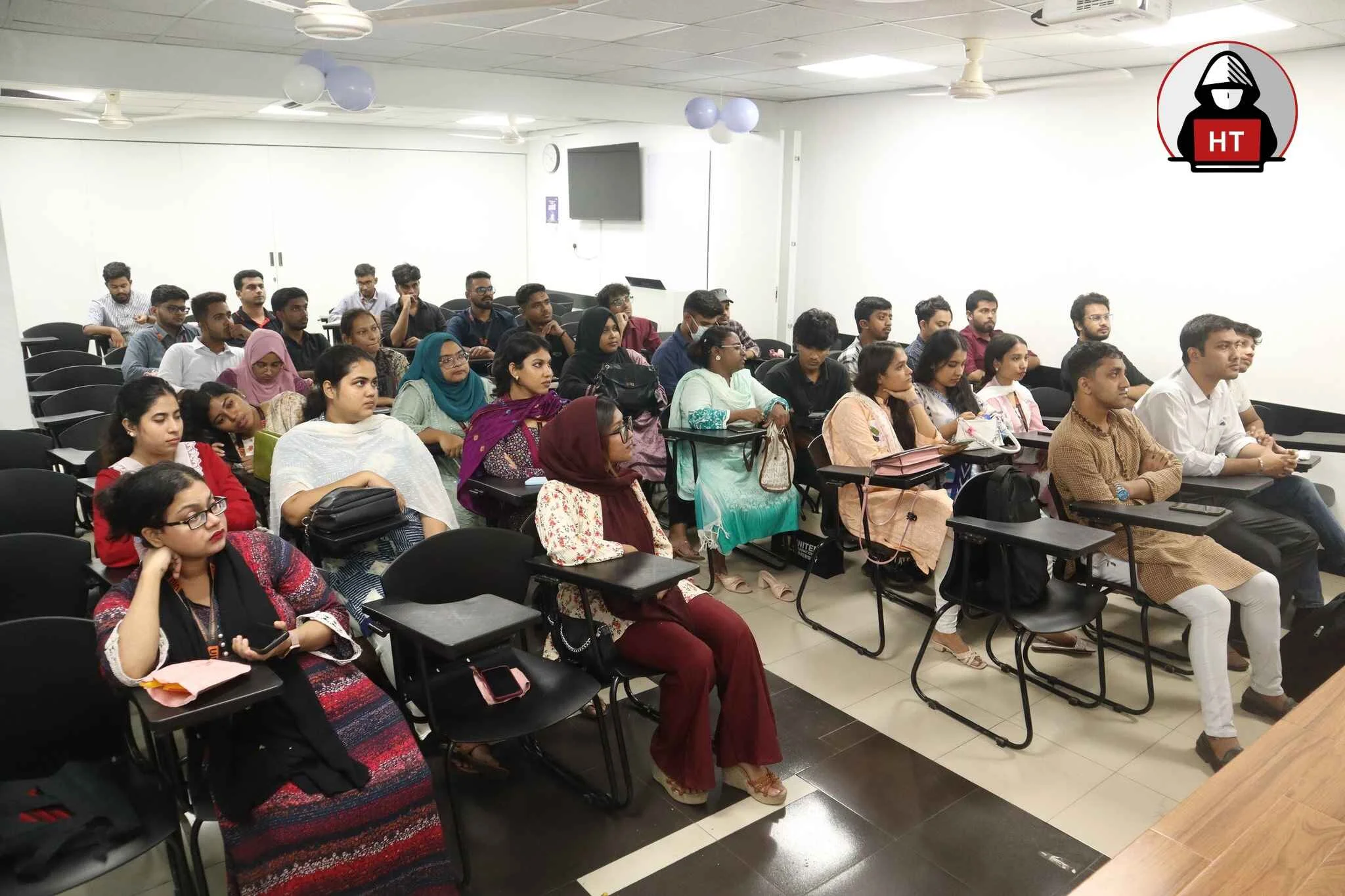Active Directory (AD) is a critical component in many organizations’ IT infrastructure, enabling centralized management of user accounts, permissions, and resources across networks. Originally developed by Microsoft, AD is used by enterprises of all sizes for identity management and access control. Unfortunately, its centrality also makes it an attractive target for cyber attackers. AD systems often house sensitive information and provide pathways for lateral movement across networks, making them a focal point in both real-world cyberattacks and penetration testing efforts. In recent years, Active Directory pentesting has become an essential skill for security professionals, providing them with the knowledge and techniques required to assess, identify, and mitigate AD vulnerabilities. Most courses include hands-on labs focused on enumeration, teaching students to recognize and exploit misconfigurations that could lead to privilege escalation. This blog explores the fundamentals of Active Directory pentesting, what to expect from an AD pentesting course, and the key skills, tools, and methodologies involved.
 Top Ranked Cyber Secuirty Course By HACKING TEACHER
Top Ranked Cyber Secuirty Course By HACKING TEACHER


































AI Powered Full Stack Web Development Course
Learn AI powered web development and futureproof your career to lead in an AI dominated tech industry.
Active Directory plays a critical role in managing and securing network resources, and because of its centralization, any compromise can have far-reaching consequences. AD allows administrators to create user accounts, enforce security policies, manage resources, and control access to systems. Compromising an AD environment can enable attackers to escalate privileges, move laterally, and gain unauthorized access to sensitive data.
Due to AD's widespread use in enterprise environments, attackers constantly probe for vulnerabilities within it to exploit misconfigurations and escalate privileges. Security professionals who understand AD's structure, functionality, and potential weaknesses are therefore better equipped to protect these systems and mitigate the risks associated with them. AD pentesting, in essence, is an in-depth, focused evaluation of AD security, aimed at identifying and addressing vulnerabilities that could compromise an organization’s entire network.
AD pentesting courses teach students to perform lateral movement exercises safely, demonstrating how attackers might pivot across systems and gain access to sensitive resources. In addition to technical techniques, courses also cover how to avoid detection during lateral movement, as sophisticated attackers often operate stealthily to avoid triggering security alerts. Understanding lateral movement strategies is essential for security professionals to anticipate and mitigate potential attack paths.
ACL misconfigurations also provide paths to privilege escalation; for instance, if a low-level user has “write” access to a high-privilege account, an attacker could modify account settings and gain elevated privileges. Courses typically guide students through these techniques using practical labs, allowing them to practice and understand the potential impact of each method in a controlled setting.
































Highest Salary
Average Salary
Hiring Partners


+ Unlimited Pwnbox usage
+ CPE credits submission
+ Unlimited Pwnbox usage
+ CPE credits submission
+ Unlimited Pwnbox usage
+ CPE credits submission
+ Unlimited Pwnbox usage
+ CPE credits submission
The Hacking Teacher Certification teaches educators about teaching ethical hacking and cybersecurity with the proper skills. This program offers extensive training on some of the most technology pressing issues facing the cyber security world today including penetration testing, threat analysis and secure coding. It is ideal for IT professionals and trainers to ensure that all knowledge is transferred for audiences to inspire the next generation of cybersecurity experts.

We focus on essential exploiting topics such as SQL Injection, Wireless Networks, IoT Hacking, Cloud Computing, social engineering, sniffing, and session hi jacking.










Enterprise Attack Simulation Training is an opportunity to practice simulating cyberattacks against corporate networks on a hands-on basis. Participants learn how to find vulnerabilities, to exploit weaknesses and to evaluate system defenses using advanced tools and methodologies.

The practice is in live, not simulated virtual IT labs built according to the leading vendors certifications, including: Apart from these CompTIA, Microsoft, Cisco, VMware etc." Our labs were designed to be interactive, and targeted towards a lot of real world experience so learners can hone their practical skills. We work with subject matter experts on networking, security, cloud computing and more, and we create and deliver labs based on these core IT competencies.











Hacking teacher Learning is here to ensure that you don’t get left behind in a world of technology that is too quickly changing. On a day to day basis, we’re recording and sharing content that can impact your bottom line.

Persistence mechanisms allow attackers to maintain long-term access to a compromised environment, even if their initial foothold is discovered. In Active Directory pentesting, persistence techniques include modifying GPOs, creating rogue accounts, setting up malicious scheduled tasks, and adding unauthorized users to security groups. Attackers may also use golden and silver ticket attacks, which leverage forged Kerberos tickets to establish lasting access. A golden ticket, for example, grants domain-wide access, while a silver ticket allows access to specific services.
Courses in AD pentesting cover these persistence techniques, enabling students to understand how attackers maintain access and how to detect and remove unauthorized entries. Persistence is often difficult to detect, as it involves subtle modifications to legitimate AD functions. Training on persistence mechanisms provides security professionals with the insights they need to identify, disrupt, and eliminate hidden threats in AD environments.
Avoiding detection is a key skill in AD pentesting, as many modern security tools monitor network traffic and system behavior for suspicious activity. Effective pentesting involves understanding how to bypass these defenses, simulating the tactics of advanced threat actors. Techniques include using stealthy tools like Cobalt Strike, avoiding noisy commands, and employing techniques to evade endpoint detection and response (EDR) solutions.
AD pentesting courses provide guidance on evasion strategies, teaching students how to blend in with normal network traffic, encrypt command-and-control communications, and execute commands in ways that minimize alert generation. Detection avoidance is a critical skill for ethical hackers, as it ensures that their assessments provide an accurate simulation of real-world adversaries, highlighting potential blind spots in an organization’s detection capabilities.
AD pentesting relies on a suite of tools that facilitate enumeration, privilege escalation, lateral movement, and more. Some of the most common tools include PowerShell-based tools like PowerView and Empire, enumeration tools like BloodHound and SharpHound, and exploitation frameworks like Metasploit and Cobalt Strike. PowerView is invaluable for querying AD data and gathering information, while BloodHound’s graphical interface helps visualize relationships and potential attack paths.
SharpHound, a C# tool, performs similar functions as BloodHound but is often used to avoid detection by PowerShell logging. Empire provides post-exploitation capabilities and supports a range of persistence techniques. A good AD pentesting course provides hands-on experience with these tools, allowing students to develop a solid understanding of each tool’s capabilities and limitations. By mastering these tools, students are better prepared to conduct thorough assessments and uncover hidden vulnerabilities in AD environments.
As with all forms of ethical hacking, AD pentesting requires strict adherence to ethical and legal guidelines. Penetration testers must obtain explicit authorization before conducting tests, ensuring they have permission to access and analyze AD environments. Ethical considerations are equally important; testers should avoid actions that could disrupt production environments or expose sensitive data.
For example, testers must avoid manipulating or exploiting production accounts or data in ways that could cause harm. AD pentesting courses include discussions on legal and ethical issues, teaching students to respect boundaries and prioritize client safety. Understanding these principles is essential for developing a responsible and professional approach to AD pentesting, as unauthorized or reckless actions can result in serious consequences.
Several certifications complement Active Directory pentesting skills, validating an individual’s expertise in ethical hacking and AD security. Popular certifications include CompTIA PenTest+, EC-Council Certified Ethical Hacker (CEH), and Offensive Security Certified Professional (OSCP).
More advanced certifications, such as Offensive Security Certified Expert (OSCE) and GIAC Penetration Tester (GPEN), focus on advanced pentesting techniques.
To effectively engage in Active Directory Pentesting, individuals should have a solid understanding of Windows operating systems, networking, and security concepts. Knowledge of Active Directory’s structure, including users, groups, organizational units (OUs), domain controllers, and DNS, is essential.
Additionally, experience with common penetration testing tools (e.g., Metasploit, BloodHound, Mimikatz) and scripting languages like PowerShell or Python is beneficial. For those new to penetration testing, foundational knowledge of ethical hacking, network security, and vulnerability assessment will be helpful before diving into Active Directory-specific testing.

Interview wifi Hacking

Life of Hacking Teacher

Microsoft on Vishal Sharma

Software Engineer at Vista
“The Active Directory Pentesting course was practical and insightful. The instructors were knowledgeable, and the hands-on labs were valuable. Highly recommended for those looking to enhance their penetration testing skills.”

Software Engineer at Pulse
“Enrolling in the Active Directory Pentesting course was a game-changer for my cybersecurity career. The content was comprehensive, and the practical demonstrations were clear. I feel much more confident in assessing and securing Active Directory environments.”

Data Analysis at Swift
“I highly recommend the Active Directory Pentesting course. The instructors provided practical insights, and the hands-on labs were challenging. Whether you’re a beginner or experienced professional, this course will enhance your skills for real-world engagements.”
FAQ
Our online courses are tailored to your specific needs, whether you are an experienced senior executive or a rookie leader.
Lorem ipsum, dolor sit amet consectetur adipisicing elit. Eum laborum qui tempora numquam!
An Active Directory Pentesting course teaches techniques and tools used to test Active Directory (AD) environments for security. It would cover everything from privilege escalation, domain enumeration to user exploitation, lateral movement, and AD misconfigurations. Students learn how to identify vulnerabilities in AD setups, and how to gather an authorization jump and garner unauthorized access in the network of the organization. The course typically features hands on labs, real world scenarios and penetration testing tools including BloodHound, Mimikatz and PowerShell.
An Active Directory Pentesting course lasts for how long depends on the provider and the course structure. Basic courses will involve 10-20 hours, spending 1-2 weeks to get acquainted with basic concepts, while more advanced or comprehensive training can go from 3-4 weeks (more for courses of some in-depth subjects, where you’d spend more time learning by heart). Instructor led courses are usually 2-5 days long, but self paced online courses can be completed when it suits you.
To take an Active Directory Pentesting class you should know about networking, Windows operating systems, and general cybersecurity principles. Penetration testing tool experience, such as Nmap and Metasploit is a plus. It’s important to have basic understanding of Active Directory, authentication methods, network protocols LDAP and SMB. You'll also want a computer for hands on practice and virtual environments; Kali linux, or even, a Windows Server.
Offensive Security’s Active Directory Exploitation course is one of the best courses for Active Directory pentesting. PentesterLab’s active directory exploitation course is real world scenarios and another excellent option. Another well regarded course is SANS SEC660 which trains students on practical AD security testing. Depending on the courses you choose, these courses present structured, in-depth learning with hands on labs and expert led content.
An Active Directory Pentesting course can be completed in 1 month, and self paced training options allow you to do it. It is possible to complete basic courses in 2 weeks with lots of effort. If you spend consistent hours in the lab practice and study, a month is good enough to complete training for at least more in depth courses or certification tracks.
The best Active Directory Pentesting courses include Offensive Security's Active Directory Exploitation (part of OSCP training), PentesterLab’s Active Directory Exploitation, and SANS SEC660: Penetration Testing, Exploits and Ethical Hacking practical course. All of these are comprehensive courses — the majority of them are a handful of theory followed by hands on labs, and they include a wide range of areas like privilege escalation, lateral movement, and AD exploitation
The Active Directory Pentesting training will lead to job roles such as a Penetration Tester, Red Team Specialist, Cybersecurity Consultant, Security Engineer, etc. Critical in highly internal network security focused roles, this will help organizations find their vulnerabilities in their AD infrastructure, and help mitigate risks of privilege escalation and unauthorized access.
Indeed, PentesterLab, HITB, TryHackMe and other similar resources out there provide labs and tutorials to help you learn Active Directory Pentesting. Books, blogs, and forums all of them helped but self learning requires regular practice and a good grasp over AD, networking and exploitation techniques.
PentesterLab’s Active Directory Exploitation is a great first start to working through exploitation, especially for beginners. It's hands on exploitation and learn attack techniques in a beginner friendly way. More Obtainable Foundation Certifications include CompTIA Security + or CERTIFIED ETHICAL HACKER (CEH), each of which is useful to obtain prior to more specialized AD pentesting courses. If you want to train for a course that covers Active Directory Pentesting what do you need to train before you can get into the topics given above in this article?
If you know a basic thing or two about networking, system admin and Windows, you are good to go with enrolling in an Active Directory Pentesting course. Knowledge of penetration testing tools such as Metasploit, Nmap and BloodHound will be held at advantage. You should also know about Active Directory in terms of users, groups and permissions and domain controllers. Success demands a solid security principles foundation: privilege escalation and exploitation techniques.
Active Directory Pentesting course is not the best for OSCP training. Active Directory Pentesting courses are more specific and apply toward testing and exploitation on all aspects of Active Directory environments, while OSCP (Offensive Security Certified Professional) is a general penetration testing course on all environments. Active Directory Pentesting is more focused than OSCP which includes other vectors than Evil Windows OS Admin.
PentesterLab, Offensive Security, and SANS offer active directory courses. All of these platforms also provide structured training with hands-on labs. Alongside this, Udemy, Pluralsight and TryHackMe/Hack The Box also offer many resources (as well as practical exercises and simulated AD environments) to learn.
Offensive Security’s Active Directory Exploitation and PentesterLab’s Active Directory Exploitation course should be the best courses on Active Directory Pentesting. They are known for their hands-on approach and cover a wide range of exploitation techniques, tools and real world scenarios. Along with this you can provide in depth training in advanced penetration testing and AD exploitation in SANS SEC660.